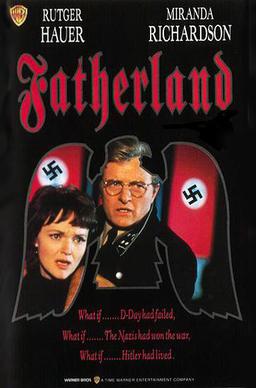V2 by Robert Harris
| November 28th, 2020 at 1:45:57 PM permalink | |
| Pacomartin Member since: Oct 24, 2012 Threads: 1068 Posts: 12569 |    V2 by Robert Harris is the latest novel of the author of Fatherland, Enigma, and Archangel Since the RAF proved unable to locate and bomb the launch sites, which were largely mobile, other ways had to be found. Harris’s narrative is based on one of the ingenious solutions British boffins concocted during the war: to work out, by using algebraic methods, the ballistic arc of the rocket so that its point of origin could be accurately detected and an air raid mounted as rapidly as possible. That sounds like a tricky calculation. Personally I have to believe the rockets were launched from 1 of a limited number of sites (say 6) and they were trying to choose which one. I don't think they could do the general calculation with tools available at the time like sextants. |
| November 30th, 2020 at 3:58:23 AM permalink | |
| odiousgambit Member since: Oct 28, 2012 Threads: 154 Posts: 5112 | Interesting. Boffins? Recently saw a youtube video claiming that the British had jet aircraft at the end of the war, the Gloster Meteor, but used it only to try to shoot down V-1 buzzbombs. I'm guessing one problem was that it was not in general production and they couldn't replace losses putting it up against German jets. There was no way at the time to shoot down V2s of course. I'm Still Standing, Yeah, Yeah, Yeah [it's an old guy chant for me] |
| November 30th, 2020 at 6:45:01 AM permalink | |
| Pacomartin Member since: Oct 24, 2012 Threads: 1068 Posts: 12569 |
The women must have trained to do these high complex calculations in a matter of minutes. But you could consider two identical parabolas that are only displaced by origin point, and you might wonder how you could even theoretically differentiate them. Of course if the Germans were always trying to fire rockets to hit the exact same location (i.e. center of London), the initial flight path may vary. The podcast by the other is available here. Robert Harris on V2, historical fiction and WW2 https://www.historyextra.com/article-type/podcast/ The ingenious mathematical effort to stop the rockets did not work either. Not a single launch site was hit. The bombers simply could not be deployed with sufficient speed and accuracy to pinpoint the other end of a 200-mile ballistic curve. The Plot to Stop the Nazis’ Missiles With Slide Rules Robert Harris Nov. 17, 2020 V2 By Robert Harris On the evening of Sept. 8, 1944, a rocket hurtled into the sky from a mobile launchpad in Nazi-occupied Holland, carrying with it a one-ton warhead and Hitler’s last, desperate hopes of victory. It reached a height of 58 miles and a speed of 3,500 miles per hour, emitted a terrifying crack as it broke the sound barrier over London, and then slammed into Staveley Road in the suburb of Chiswick, killing three people: an old woman, a toddler and a soldier visiting his girlfriend. The V-2 rocket was the Nazis’ last secret weapon and the world’s first long-range guided ballistic missile, the harbinger of a new science that would eventually land Americans on the moon. The V stood for Vergeltungswaffe, or vengeance weapon, and was intended as retaliation for the Allied bombing of Germany. With this powerful new armament, Hitler believed he could finally bomb Britain into submission, but the very name seemed to presage defeat: Only the vanquished seek vengeance. The science and story of the V-2 furnish the backdrop for the latest novel by Robert Harris, his 14th. Like “Enigma,” “Munich” and “Fatherland,” “V2” is another swiftly paced thriller that blends fiction with the facts of World War II. Running alongside the well-known history of the German rocket is the hidden tale of Britain’s attempt to stymie the rocket attacks — with algebra. British mathematicians believed that by using radar to track the path of each rocket, and working back from the point of impact, they could calculate exactly where it had been launched from. If this was done fast enough, they could in theory locate the position of the launchpads before the Germans dismantled them, scramble R.A.F. bombers from Britain and destroy them. Thus a team of female air force officers was dispatched to newly liberated Belgium, armed with slide rules and graph paper, to try to confound the Führer’s rocket program using the theorem of the parabolic curve. Each calculation had to be completed in under six minutes. On opposite sides of this strange military equation Harris places Kay Caton-Walsh, a young woman who survives a rocket attack in London and joins the team of officers racing to calculate the coordinates of the launch sites, and Rudi Graf, a German civilian engineer sent to supervise the rocket launches from Holland. The figure of Graf may be familiar to readers of Harris’s fiction: a good man in a bad world, seeking to reconcile his work with his conscience. Image Behind Graf lurks the enigmatic character of Wernher von Braun, the real-life space scientist, Nazi of convenience, sometime SS officer and the charming, politically agile head of the V-2 program who would throw his lot in with America at war’s end and play a key role in the U.S. space program. “V2” was written, Harris explains, during the coronavirus lockdown, and it has the intensity of a book produced under abnormal pressure: Some of the strain we have all felt in recent months seems to be reflected in his characters as they struggle toward the end of an exhausting war. This is a book written fast, and it hurtles along, following its own, less predictable emotional trajectory. No novelist is better at evoking the gray resilience of wartime Britain, the moral confusion as the Third Reich staggered toward collapse, and the aroma of a bacon sandwich served in a steamy army canteen. The research, as with all of Harris’s books, is impeccable, but worn lightly. At a mass funeral for members of a V-2 launch crew, killed when one of the rockets explodes, an SS general declares: “There is not a building standing within 500 meters of Leicester Square. … We are the Vengeance Division! We will prevail!” His lie captures the combination of bombast and mendacity that marked the final days of the Nazi regime. Equally true to history is the subdued assessment made by a British officer of the V-2 campaign: “a bloody nuisance.” The rockets killed about 2,700 Londoners and destroyed 20,000 homes. But of the missiles aimed at London, only 517 hit the capital while 598 fell short, detonated in flight or otherwise failed. They caused widespread anxiety, but had little impact on the course of the war, and may even have hastened the end for Hitler by soaking up vast resources at a crucial moment: Germany was running out of food, but the alcohol to fuel each rocket had to be brewed from 30 tons of potatoes. The ingenious mathematical effort to stop the rockets did not work either. Not a single launch site was hit. The bombers simply could not be deployed with sufficient speed and accuracy to pinpoint the other end of a 200-mile ballistic curve. In the hands of a lesser writer, this damp squib of history might be an impediment, but in the course of this gripping novel Harris captures something of the real nature of war: good ideas that fail, perverted science, grandiosity, lies and unintended consequences. Hitler had hoped to defy fate with a last dramatic bang. In the end, the V-2 campaign and the attempt to stop it, despite the brainpower, planning and sacrifice on both sides, were failures. After the war, von Braun was among the 1,600 German scientists and engineers who were recruited to the United States as government employees in a secret program called Operation Paperclip. By 1960, his V-2 team had been incorporated into NASA. In 1975, he received the National Medal of Honor. History can sometimes take unexpected trajectories, with incalculable outcomes. |

